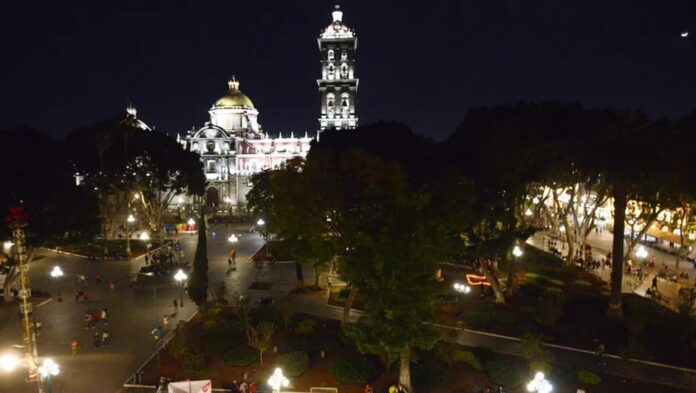In Puebla, every step is a journey through time, where history intertwines with architecture and the essence of a community proud of its legacy, dating back to the time of New Spain, when the city was laid out (by the same angels, according to legend, hence its first name was City of Angels) and is known today as the religious capital of the country, due to its multiple churches, some of great beauty.
The Historic Center can be toured by the different routes offered by the tourist buses with highly trained guides, since, in addition to churches, there are museums of relevance, one of them is the International Museum of Baroque (MIB), which, although it is not in the Historic Center, is a must-see for the art it houses.
The International Museum of Baroque stands as a tribute to human creativity and the cultural legacy of Puebla. This architectural monument fuses modernity and artistic legacy. Designed by the Japanese architect Toyo Itō, it was inaugurated eight years ago (February 4, 2016).
With assets and participation from Germany, Brazil, China, Spain, the Philippines, France, the United States, Guatemala, India, Peru, Portugal and 21 Mexican museums and collections; the MIB is an interactive space that preserves and disseminates art from the 17th and 18th centuries.
As we cross its original design, we enter a world where passion and artistic expression converge in a harmonious dance, with its exuberance and drama unfolding before us like a tapestry of living emotions.
The museum’s rooms are silent witnesses of a dialogue between artists and spectators. Paintings that come to life with each brushstroke and sculptures that transport the visitor to a world where the divine mixes with the earthly.
Every corner of the museum tells a story, a narrative that is woven with mastery and presented as a gift to the senses. The soft light caresses the masterpieces, revealing details previously hidden and creating a magical play of shadows and colors.
But the International Museum of Baroque is not only a testimony of the past: it is a beacon that illuminates the present and projects its influence on the future. Its temporary exhibitions and educational activities immerse visitors in a sea of knowledge, where the appreciation for baroque art becomes a contagious passion.
Touring the Historic Center of the country’s capital is to discover its architectural beauty. The Municipal Palace, a silent witness of its history, stands in the Plaza de la Constitución. Built in the 18th century, its imposing arcades and facade stand out as a magnificent example of colonial Pueblan design. Every detail tells the cultural richness of the region.
A few steps away is the majestic Cathedral of Puebla, whose original name is Cathedral of Our Lady of the Immaculate Conception, started in 1575 and completed until 1690. The frescoes and altarpieces inside tell the history of the Christian religion and the devotion of the Pueblan community throughout the centuries.
Behind the cathedral is the Palafoxiana Library, founded in 1646; it is the first public library in the American continent. Its collection of old books and manuscripts is an invaluable treasure. Visitors can immerse themselves in the past through the pages of works dating from the 15th to the 19th centuries, in an environment that breathes erudition and devotion to the written word.
In the historic heart of Puebla, a hotel jewel also emerges that redefines the lodging experience: Voco Royalty Downtown Puebla. This exclusive establishment not only offers high-level amenities, but also immerses its guests in a historical journey that merges with contemporary luxury.
This hotel is part of the Voco brand of the Premium options of the IHG Hotels & Resorts chain, with personalized attention and the essence of the destinations.
Carefully restored, the hotel recovers the colonial architecture that characterizes the city, offering an oasis of tranquility in the midst of the urban bustle. The rooms, decorated with exquisite taste, high ceilings and design details highlight the historical charm of the hotel, while the modern facilities guarantee a stay full of comfort and luxury.
It not only stands out for its elegance, but also for its commitment to sustainability; it implements sustainable practices, from waste management to the use of refillable amenities, thus contributing to the preservation of the environment.
The culinary proposal of Voco Royalty Downtown Puebla elevates the gastronomic experience to new heights. In fact, the hotel, initially was a restaurant that started operations more than a century ago. A must-see place to taste the Pueblan food, considered one of the most important in the country, in its restaurant you can enjoy traditional dishes, moles, the famous Chiles en Nogada (from July to September) and from October to November, the huazmole (or hip mole), a typical dish from Tehuacán, made with goat and serrano pepper, among other delicacies.
But Puebla is much more than art, gastronomy, tradition, architecture and culture, it is a city where you can enjoy other unforgettable experiences that transcend over time.
Source: Milenio







